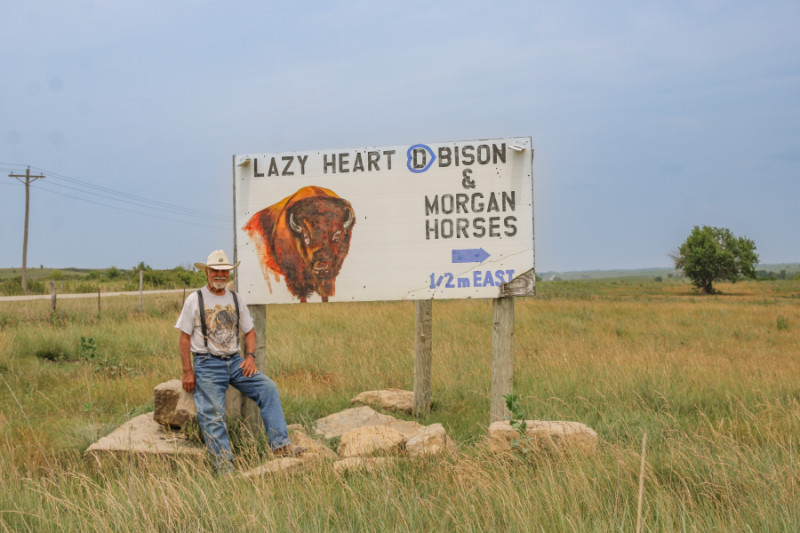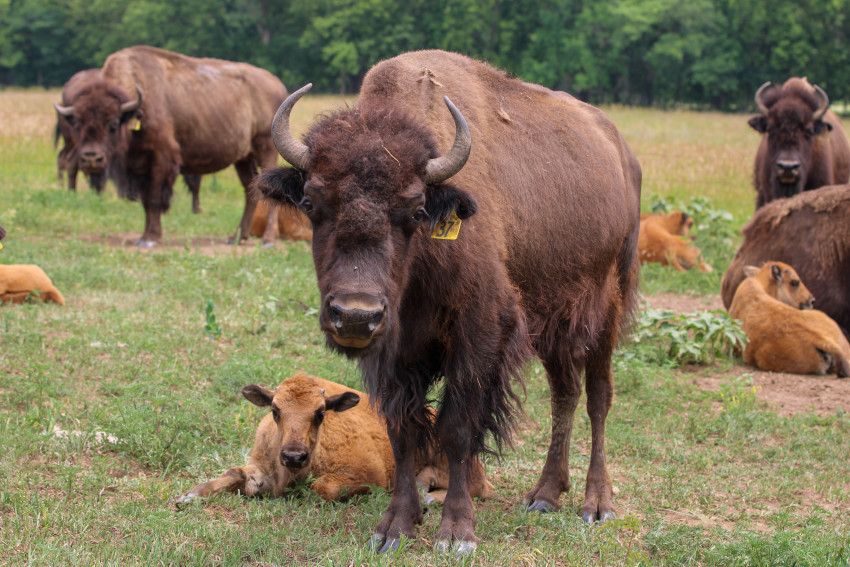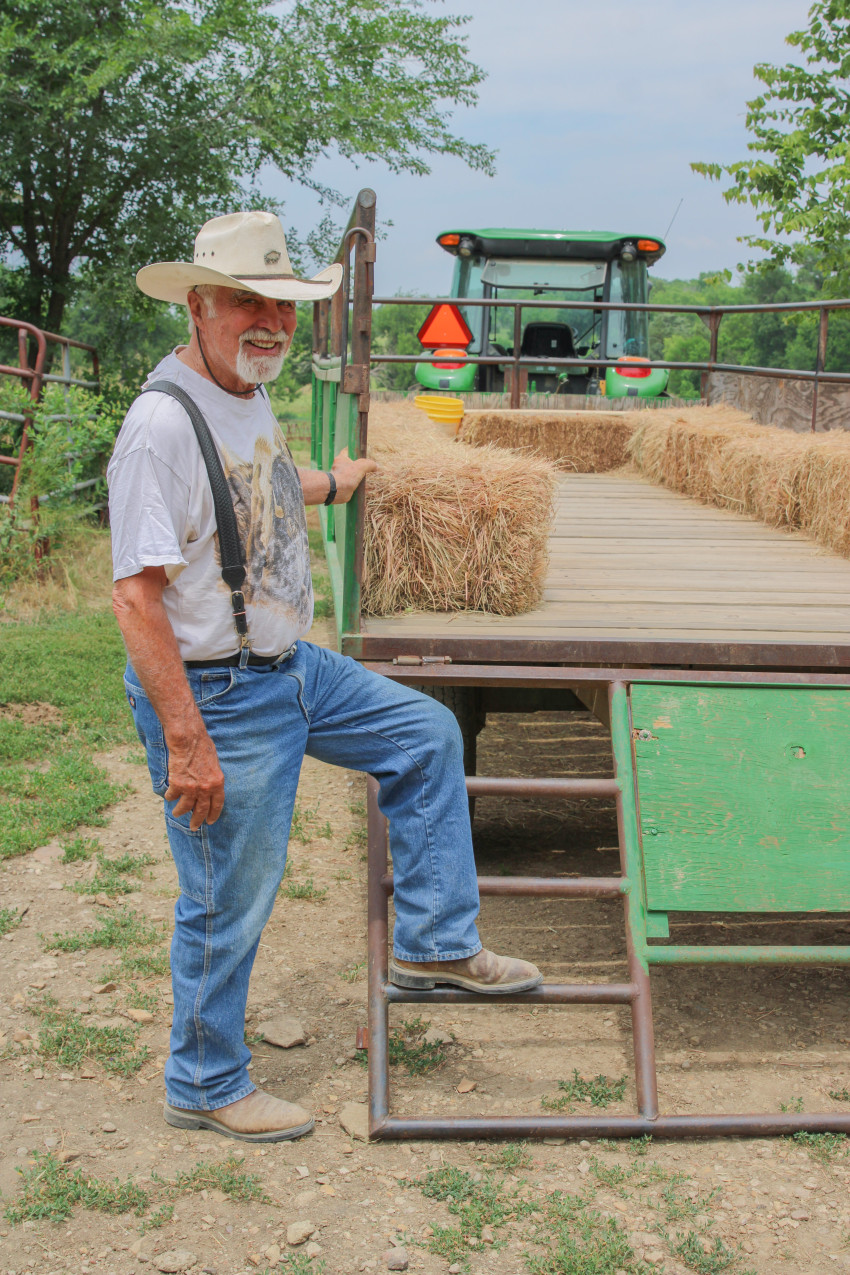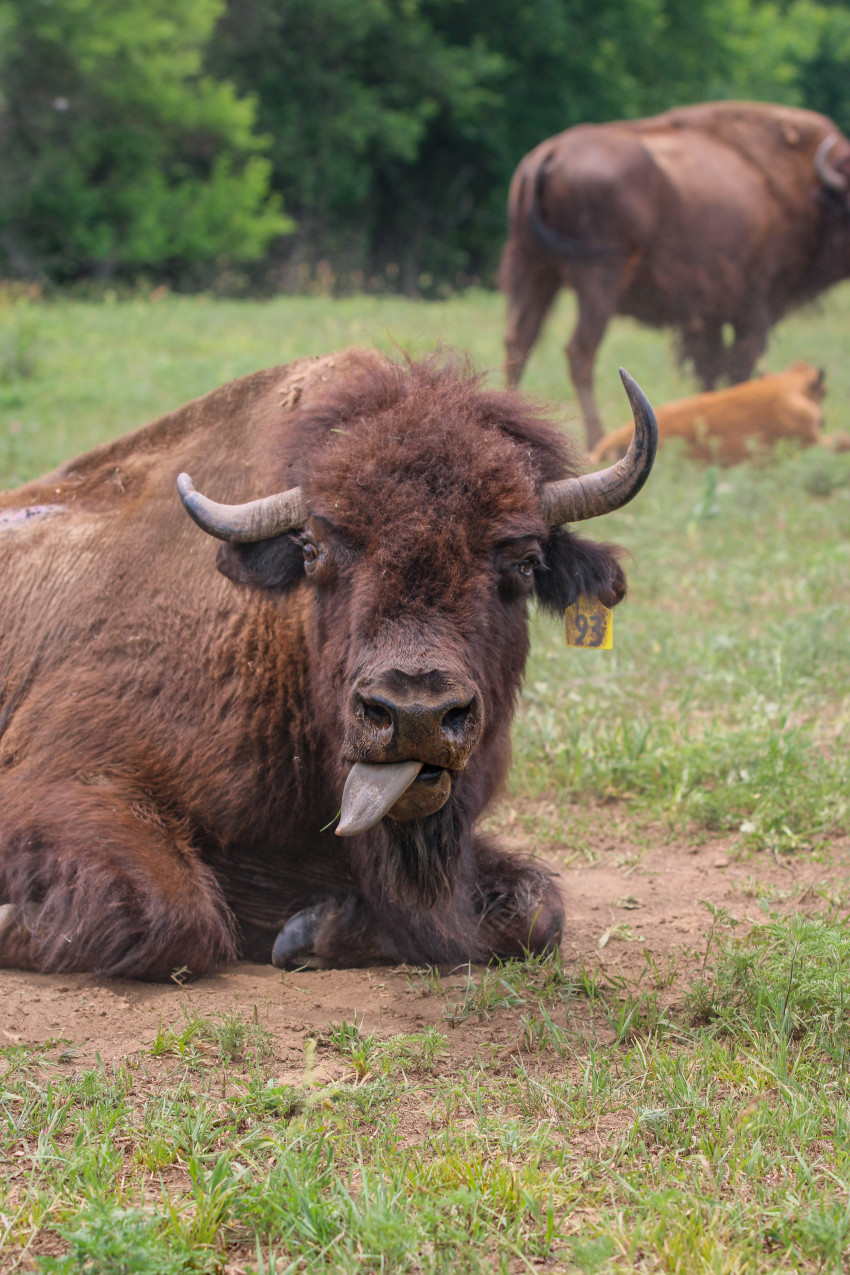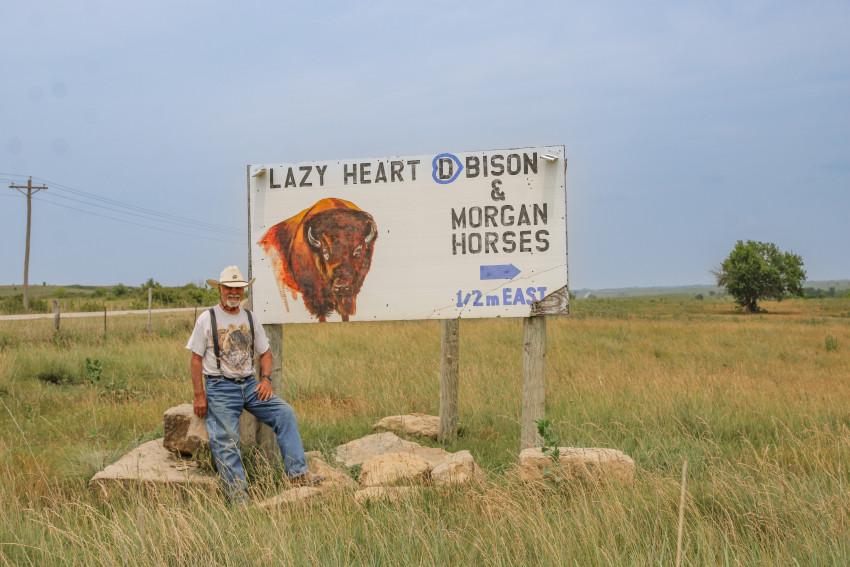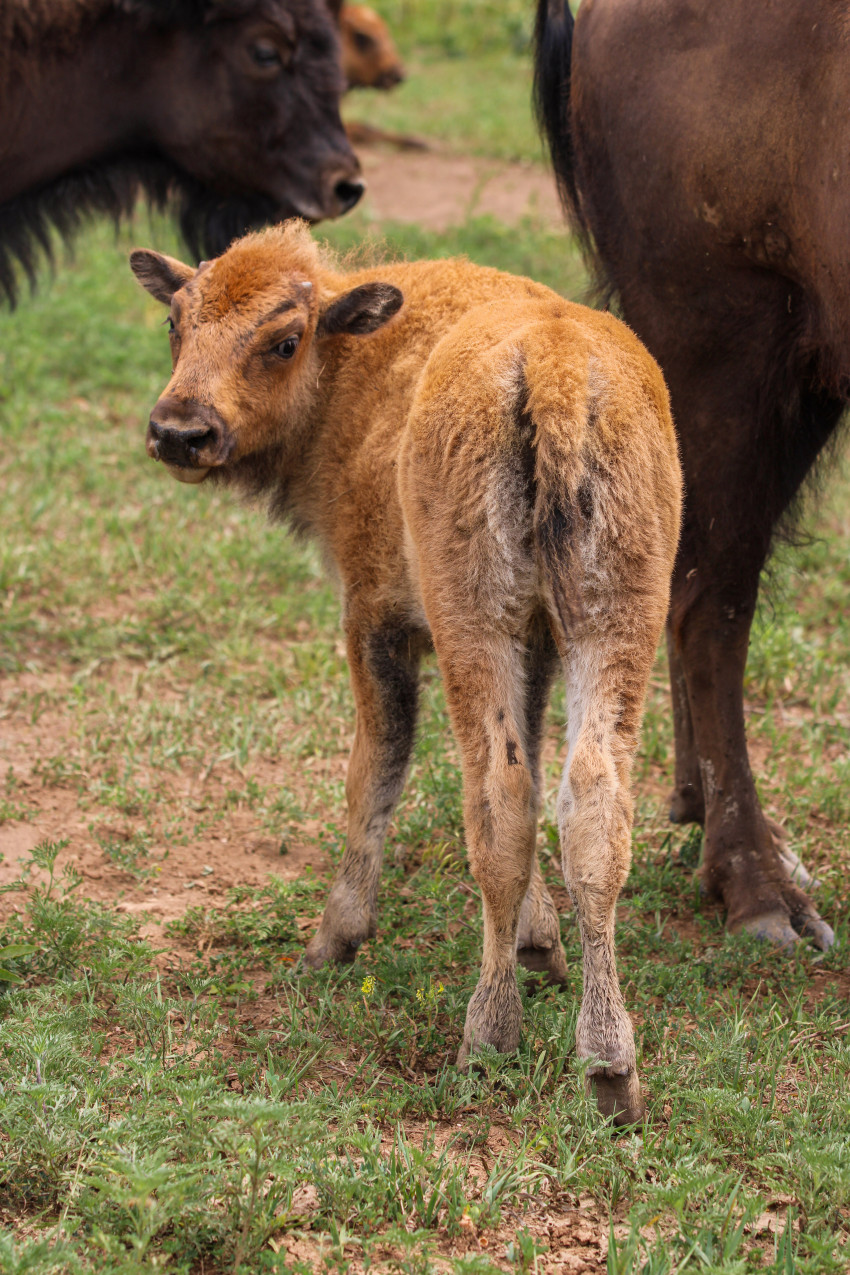Ed and Susan Dillinger moved to Pottawatomie County to start Lazy Heart D Ranch in 1993 to continue what was once in Thomas County in the town of Brewster. In Brewster, the Dillingers had cattle, crops and horses. When they got to Westmoreland, they expanded their ranch to include bison in 1995. The two worked as special education teachers before retiring and starting ranch tours full time.
“First thing I started doing when we thought of including bison was visiting other ranches,” Ed says.
“Some people think just because you can manage other livestock, you’re going to have the same thing with bison, and it isn’t true; bison are wild. You first learn how to work with wild animals and then you use your livestock skills.”
The management of bison differs from other livestock. Ed says it takes more patience and time.
“Bison pay attention to what you do and what you don’t do; they are always watching you,” Ed says. “They move as a herd and you have to let them take the lead and then use what they do in a way that works for you. You have to negotiate with them. With domestic animals, we are the predator, so we can scare and push them, but bison have no fear, they are territorial. When working with bison your equipment needs to be strong enough and your fences need to be high enough.”
Once the Dillingers figured out their system of managing bison, the herd began to expand. The ranch now has more than 60 bison.
LIFE EXPERIENCES LEAD TO BISON MANAGEMENT
Ed says his experiences in life have helped him learn how to manage his bison herd.
In the ‘70s, Ed helped rural communities in developing countries by leading strategic planning seminars with the Institute of Cultural Affairs. He also led a program to help communities evaluate their resources and needs and develop a plan to achieve their goals. Ed traveled to more than 26 different countries around the world to provide rural communities the support they needed.
“Bison are not easy because they decide what they want to do, but once you learn what they will and won’t do, you learn how to facilitate them,” Ed says. “I have worked a lot with behavior in humans, and that has helped because your intent is to facilitate.”
BISON TOURS IN KANSAS OFFER ICONIC VIEWS
A few years after purchasing bison, the Dillingers began giving tours of their ranch. The tours started out in the back of a pickup truck and evolved into a wagon pulled behind a tractor.
“People just started coming out to the ranch and said, ‘Hey we want to see your bison!’ So we started showing them around and it kind of went off from there,” Susan says.
Many kinds of groups have made their way to visit the Lazy Heart D Ranch, some as small as one or two and others as big as 20.
“Name a group and I have given them a tour,” Ed says. “I get rest and retirement homes, any form of family groups, Kansas State University students and elementary school groups. I’ve also had a family reunion come to celebrate.”
SEEING BISON ACROSS THE KANSAS PLAINS
When tour groups arrive at Lazy Heart D Ranch, they are loaded onto an open topped wagon and ride out into the pasture to find the bison. The wagon has side rails and seats along the edge with room in the center for those who may be nervous or intimidated by the bison.
Those interested are given a range cube, a hard multi-vitamin nutrient nugget, to feed the bison when they come up to the wagon. Throughout the ride, guests will be informed about the characteristics and the interactions of bison.
When the ride is over, guests can walk through the miniature museum and purchase a variety of bison meat, feel a bison hide and look at the chickens and horses nearby.
The full experience lasts about an hour and a half, depending on the group size and participation during the tour. Bring sunscreen and water and wear clothes appropriate for the weather and environment, like closed-toed shoes.
Tours run all year long but can depend on the weather since the wagon is not covered. Each tour is free, but the Dillingers ask for a cash donation that goes to Community Care Ministries in Wamego. The Dillingers also encourage tour participants to donate to their own local food pantry.
“I don’t want to turn people away who can’t pay for our tour,” Ed says. “I like to use this as my community service.”
According to Community Care Ministries, Lazy Heart D Ranch contributes an average of $5,000 every year from tours.
BISON ON THE RANGE
“We envisioned our farm to be a small farm and never imagined it to be as big of a tourist attraction as it is now,” Ed says.
After many years of ranching, the Dillingers have made memories from taking hundreds of groups on tours to helping birth a bison calf. During their time managing the Lazy Heart D Ranch, Ed and Susan have learned about the unique production of bison and met people from all over the world.
“It has been a journey, and this is where my journey has brought me,” Ed says.
No matter what type of vehicle visits the Lazy Heart D Ranch, getting an up-close experience with Kansas bison should be added to the bucket list.
Schedule a tour with Lazy Heart D Ranch by calling 785-456-5823 or emailing [email protected].
WHERE THE BISON ROAM
Did you know?
Bison and buffalo are often confused with each other and used interchangeably but they are not the same species. They are both members of the Bovidae, also known as the cow family, but they come from different parts of the world.
The term buffalo refers to the Cape buffalo and water buffalo, native to Africa and Asia. Bison are found in North America and Europe.
Although the song “Home on the Range” says, “Where the buffalo roam,” this is incorrect because buffalo never roamed the region – but bison did.
_ _ _
Story via “Kansas Living Magazine“, a publication of Kansas Farm Bureau.
